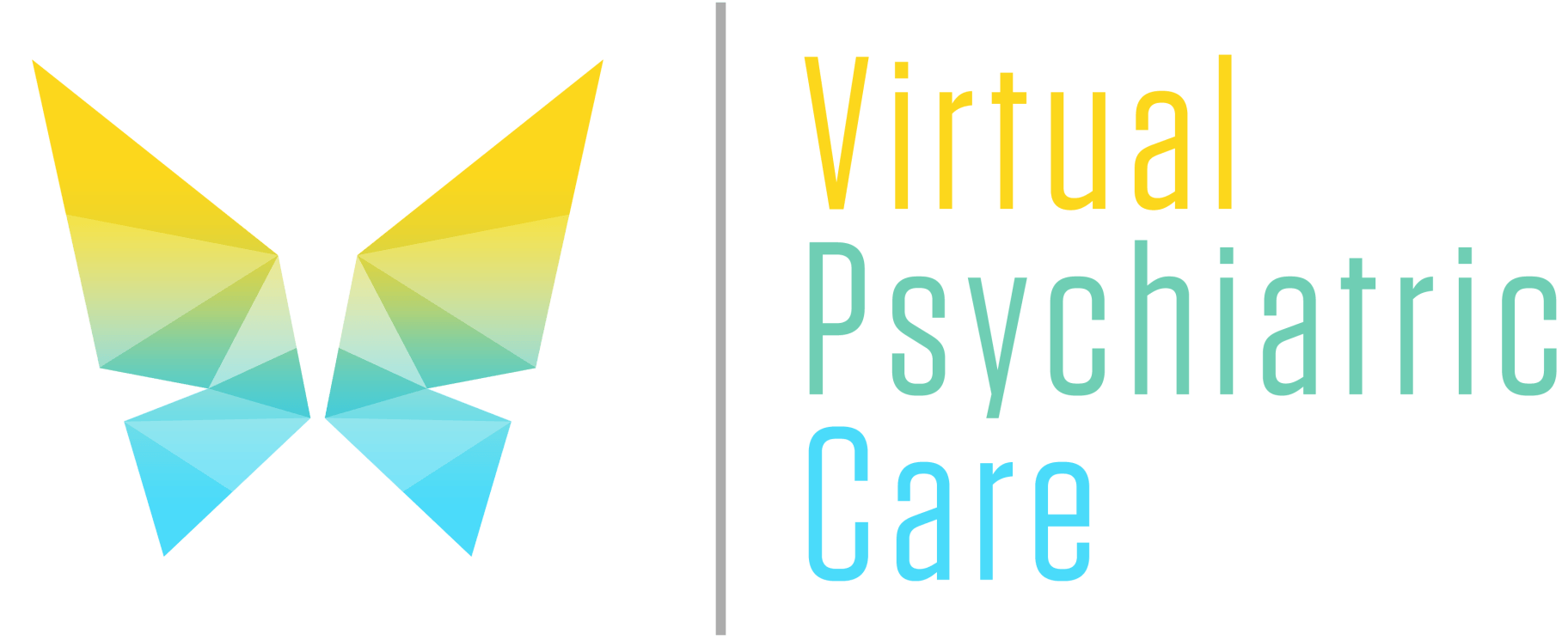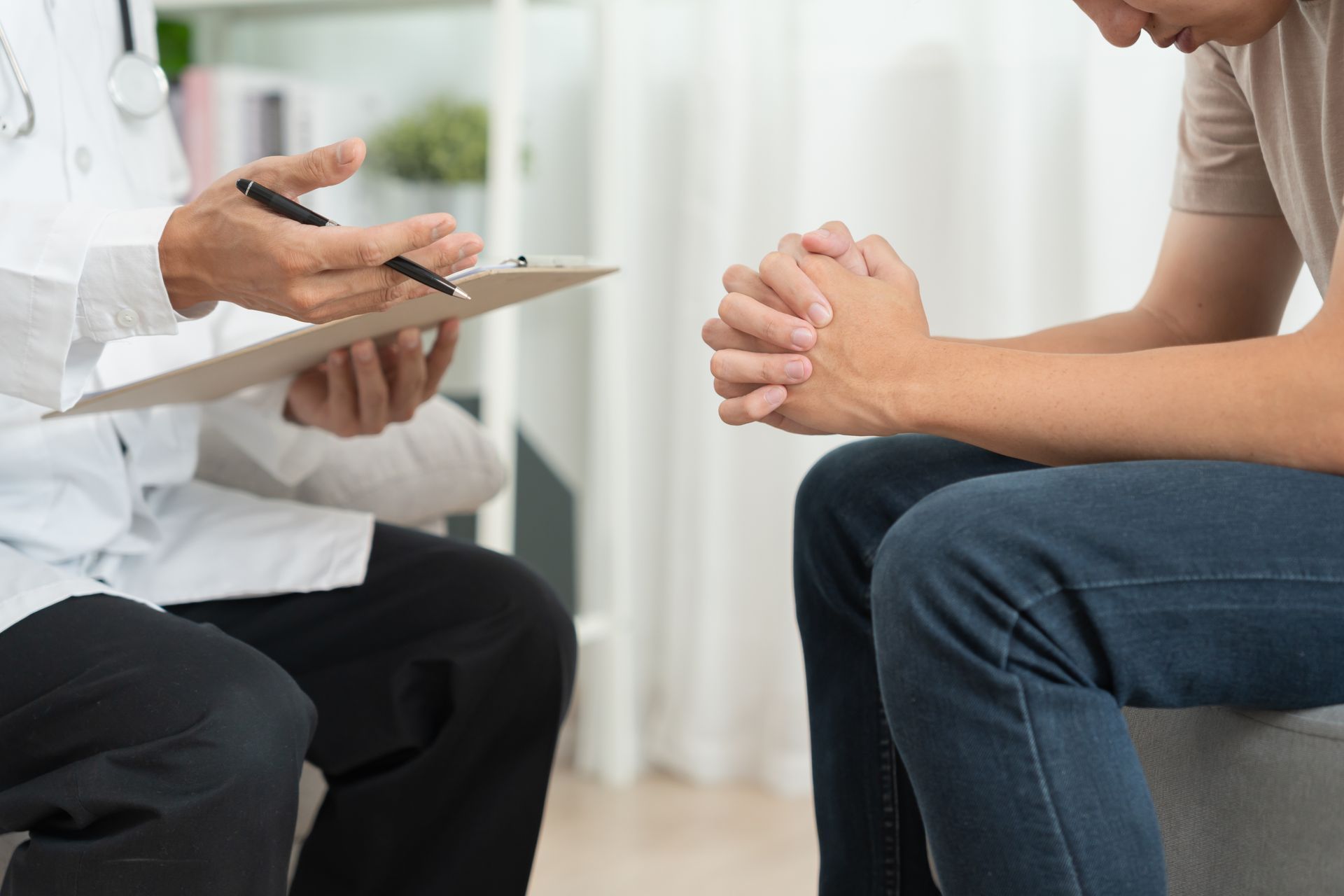The Rise of Telepsychiatry: How Virtual Mental Health Services Are Changing Lives

Introduction to Telepsychiatry
Welcome to the era of telepsychiatry, where mental health services are just a click away. In this digital age, virtual platforms have revolutionized the way we connect and interact with one another – and psychiatry is no exception. Gone are the days of long waiting lists, inconvenient appointments, and overwhelming stigma. With telepsychiatry on the rise, individuals can now access much-needed mental health support anytime, anywhere.
Picture this: you're sitting comfortably in your own home or office, speaking to a qualified psychiatrist through a video call. No commuting through traffic jams or crowded waiting rooms. No anxiety-inducing face-to-face encounters before opening up about deeply personal struggles. Instead, you can receive professional care from the comfort and privacy of your own space – all at your convenience.
In this blog post, we will explore how telepsychiatry has transformed mental health services for millions around the world.
We'll delve into its benefits such as increased accessibility and convenience, enhanced privacy and confidentiality measures, as well as cost-effectiveness for both patients and providers alike. So get ready to discover how virtual mental health services are changing lives – let's dive right in!
Benefits of Virtual Mental Health Services
Virtual mental health services, also known as telepsychiatry, have emerged as a game-changer in the field of mental healthcare. This innovative approach brings therapy sessions and psychiatric consultations to individuals from the comfort of their own homes or any location with internet access. The benefits offered by virtual mental health services are numerous and far-reaching.
One key advantage is increased accessibility and convenience. Traditional in-person appointments often require individuals to travel long distances, take time off work or school, and deal with traffic or transportation issues. With virtual mental health services, all that is needed is an internet connection and a compatible device – making it easier for people in remote areas or those with mobility limitations to receive the care they need.
Another significant benefit is privacy and confidentiality. For many individuals seeking help for mental health concerns, stigma can be a significant barrier. Virtual sessions allow them to maintain their anonymity while still receiving vital support from trained professionals. The ability to connect discreetly through secure platforms ensures that personal information remains confidential.
Cost-effectiveness is yet another advantage presented by telepsychiatry. In-person therapy sessions can be expensive due to factors such as travel costs, office rent, and overhead expenses associated with traditional practices. By eliminating these costs, virtual mental health services make quality care more affordable and accessible for a broader range of individuals.
Furthermore, research has shown that patients who receive virtual mental health services experience high levels of satisfaction compared to traditional face-to-face encounters.
A study published in JAMA Psychiatry found that video-based therapy was just as effective as in-person therapy for treating depression - demonstrating the positive impact that telepsychiatry can have on patient outcomes.
In conclusion, the rise of telepsychiatry has revolutionized the way we approach mental healthcare delivery by providing numerous benefits like improved accessibility and convenience, enhanced privacy protection,and cost-effectiveness.
These advancements pave the way towards integrating telepsychiatry into standard practice, ultimately resulting in improved mental health outcomes for individuals worldwide. As technology
Accessibility and Convenience
The rise of telepsychiatry has revolutionized the way mental health services are delivered, making them more accessible and convenient than ever before. With just a few clicks, individuals can now connect with licensed psychiatrists from the comfort of their own homes.
One of the key benefits of virtual mental health services is improved accessibility. In rural areas or regions with limited access to mental health professionals, telepsychiatry offers a lifeline to those who would otherwise struggle to receive adequate care. Through video calls or online messaging platforms, patients can easily schedule appointments without having to travel long distances or wait for months on end.
Moreover, telepsychiatry eliminates many barriers that may prevent people from seeking help in traditional settings. The convenience factor cannot be overstated – imagine being able to have therapy sessions during your lunch break at work or while traveling abroad! This increased flexibility allows individuals to prioritize their mental well-being alongside their other commitments and responsibilities.
In addition, virtual mental health services also provide a sense of privacy and confidentiality that some patients may find comforting. By connecting remotely, there is no need for face-to-face interactions in crowded waiting rooms where anonymity could potentially be compromised. This aspect alone encourages more individuals to seek treatment without fear of judgment or stigma.
It's important to note that telepsychiatry is not only convenient for patients but also for healthcare providers themselves. Psychiatrists can reach a larger pool of patients and effectively manage their caseloads without sacrificing quality care. Additionally, virtual visits often require less administrative work compared to traditional in-person consultations.
The accessibility and convenience offered by telepsychiatry have undoubtedly changed lives for the better. It has opened up avenues for support that were previously inaccessible due to geographical constraints or personal circumstances. As technology continues to advance and become even more integrated into our daily lives, we can expect telepsychiatry to play an increasingly vital role in shaping the future landscape of mental health care.
Privacy and Confidentiality:
When it comes to mental health, privacy and confidentiality are paramount. Many individuals hesitate to seek help due to concerns about their personal information being shared or accessed without their consent. This is where telepsychiatry shines.
In virtual mental health services, privacy and confidentiality are taken seriously. By utilizing secure platforms and encrypted communication channels, telepsychiatry ensures that sensitive information remains confidential. Patients can feel comfortable knowing that their conversations with psychiatrists are protected from unauthorized access.
Telepsychiatry also eliminates the need for physical waiting rooms, reducing the chances of running into someone you know while seeking help. This added layer of anonymity can be particularly beneficial for those living in tight-knit communities or small towns where stigma surrounding mental health may persist.
Moreover, the remote nature of telepsychiatry allows patients to choose a location where they feel most at ease during sessions – whether it's in the comfort of their own homes or another private setting. This flexibility not only enhances privacy but also fosters a sense of control over one's environment during therapy.
Telepsychiatry prioritizes patient privacy and confidentiality by implementing robust security measures and offering remote counseling options. These advancements empower individuals to seek help without compromising their personal information or feeling exposed in traditional healthcare settings.
Cost-Effectiveness:
One of the key advantages of telepsychiatry is its cost-effectiveness. Traditional in-person mental health services often come with high costs, including transportation expenses and missed work or school hours. With telepsychiatry, these additional expenses are eliminated.
By utilizing virtual platforms for therapy sessions, individuals can save both time and money. They no longer have to spend hours commuting to a clinic or office, as they can simply log on to their computer or smartphone from the comfort of their own home.
Moreover, telepsychiatry eliminates the need for expensive office space and equipment typically associated with traditional mental health practices. This allows providers to offer more affordable rates without compromising on quality care.
Additionally, virtual mental health services may be covered by insurance plans just like traditional appointments, making it even more cost-effective for patients. This means that individuals who might otherwise struggle financially can still access the help they need without breaking the bank.
Cost-effectiveness is a significant benefit of telepsychiatry that not only makes mental healthcare more accessible but also ensures that individuals can receive treatment without facing financial hardships.
The Impact of Telepsychiatry on Patients
Telepsychiatry has revolutionized the way mental health care is delivered, offering numerous benefits to patients. One significant impact is increased access to services for individuals who may otherwise struggle to receive timely and convenient care.
With virtual mental health services, patients can now connect with psychiatrists from the comfort of their own homes or any location that suits them best. This eliminates the need for long commutes or time-consuming visits to a physical clinic. The convenience factor alone has made a substantial difference in many lives.
Moreover, telepsychiatry ensures privacy and confidentiality for patients. By conducting sessions remotely through secure video conferencing platforms, individuals feel more at ease discussing sensitive topics without worrying about being overheard by others in waiting rooms or shared spaces.
In terms of cost-effectiveness, telepsychiatry has proven beneficial as well. Virtual consultations often have lower fees compared to traditional face-to-face appointments, making mental health services more affordable and accessible for a wider range of people.
The impact on patient outcomes cannot be underestimated either. Telepsychiatry allows for regular check-ins with psychiatrists without the hassle of scheduling conflicts or long wait times between appointments. This consistent support can significantly improve treatment adherence and overall progress towards recovery.
Furthermore, telepsychiatry breaks down barriers faced by those living in remote areas where psychiatric resources may be scarce. Through virtual platforms, specialists can reach patients regardless of their geographical location, ensuring they receive quality care even if they are miles away from a major city center.
The positive impact of telepsychiatry on patient engagement should not be overlooked either. With technology integrated into our daily lives more than ever before, utilizing digital tools for mental health support resonates well with younger generations who are accustomed to interacting online.
The rise of telepsychiatry marks an exciting advancement in mental healthcare delivery. It offers accessibility and convenience while maintaining privacy and confidentiality – all at a lower cost. With its potential to improve patient outcomes and reach those
The Future of Mental Health Care: Integrating Telepsychiatry into Standard Practice
As technology continues to advance at an exponential rate, it's no surprise that the field of mental health care is also evolving. One major development in recent years has been the rise of telepsychiatry – a form of virtual mental health services that allows patients to receive psychiatric evaluations and treatment remotely, using video conferencing software.
The integration of telepsychiatry into standard practice holds great promise for improving access to mental health care. In many areas, there is a shortage of psychiatrists and other mental health professionals, making it difficult for individuals to get the help they need in a timely manner. With telepsychiatry, geographical barriers are eliminated, allowing patients in remote or underserved areas to connect with qualified providers from the comfort of their own homes.
Not only does telepsychiatry increase accessibility, but it also offers greater convenience for both patients and providers. Gone are the days when individuals had to take time off work or travel long distances for an appointment. Now, all they need is a reliable internet connection and a device with a camera.
Privacy and confidentiality have always been paramount in mental health care. Thankfully, telepsychiatry platforms are designed with strict security measures in place to protect patient information. Providers must adhere to HIPAA regulations just as they would in face-to-face sessions.
Another advantage of telepsychiatry is its cost-effectiveness compared to traditional in-person therapy sessions. By eliminating transportation costs and reducing overhead expenses associated with maintaining physical clinics or offices, providers can offer more affordable services without compromising quality.
Perhaps most importantly, integrating telepsychiatry into standard practice has proven beneficial for patients themselves. Research has shown that virtual mental health services can be just as effective as traditional therapy methods when it comes to treating conditions such as depression and anxiety disorders.
Challenges and Limitations
While telepsychiatry has many advantages, it also faces several challenges and limitations that need to be addressed. One of the main concerns is the potential for technical difficulties. Poor internet connection or technological glitches can disrupt communication between patients and mental health professionals, leading to a less effective session.
Another challenge is the issue of trust and rapport-building in virtual therapy sessions. Some individuals may find it harder to establish a strong therapeutic alliance with their therapist through a screen compared to face-to-face interactions. Building trust takes time, and without physical presence, this process can be more challenging.
Furthermore, there are certain mental health conditions that may not be suitable for telepsychiatry. For example, severe cases requiring immediate intervention or those involving significant risk factors might require in-person evaluation and treatment.
Additionally, there are legal considerations related to practicing across state lines or internationally when providing telepsychiatry services. Each region may have different regulations regarding licensure requirements and patient privacy laws that must be navigated carefully.
While virtual mental health services seek to increase accessibility, they still face barriers related to technology access and digital literacy among certain populations. Not everyone has reliable internet access or familiarity with using video platforms for healthcare purposes.
In order for telepsychiatry to reach its full potential as a viable option for mental healthcare delivery, these challenges must be acknowledged and addressed by healthcare providers, policymakers, and technology developers alike. By finding innovative solutions to overcome these limitations, we can ensure that virtual mental health services continue evolving towards better outcomes for all individuals seeking support.
Final Thoughts
The rise of telepsychiatry has revolutionized mental health care, providing a convenient and accessible way for individuals to receive the support they need. Through virtual mental health services, patients can now connect with psychiatrists and therapists from the comfort of their own homes or any location with internet access.
The benefits of telepsychiatry are evident. It offers enhanced accessibility, allowing those in remote areas or with limited mobility to access quality mental health care. With just a few clicks, people can schedule appointments and receive treatment without the hassle of traveling long distances or dealing with transportation issues.
Privacy and confidentiality are also prioritized in telepsychiatry. Patients have control over their surroundings during therapy sessions, leading to increased comfort and openness about sensitive topics. The use of secure platforms ensures that personal information remains protected.
Additionally, telepsychiatry is cost-effective both for patients and providers. With reduced overhead costs associated with traditional brick-and-mortar clinics, virtual mental health services offer more affordable options for individuals seeking treatment.
Telepsychiatry has had a significant impact on patients' lives by breaking down barriers to accessing mental health care. It has helped alleviate stigma surrounding seeking help by providing discreet avenues for support. The convenience it offers allows individuals to fit therapy into their busy schedules while reducing missed appointments.
Looking ahead, integrating telepsychiatry into standard practice holds great promise for the future of mental health care delivery. By combining virtual consultations with traditional in-person visits when necessary, healthcare providers can ensure comprehensive patient-centered care that meets individual needs efficiently.
However, despite its many advantages, there are challenges and limitations that need to be addressed as telepsychiatry continues to evolve. Issues such as technology barriers (e.g., lack of internet access), regulatory frameworks regarding licensing across state lines, and reimbursement policies must be navigated effectively for widespread implementation.
In conclusion ,telepsychiatry is transforming how we approach mental healthcare by making it more accessible, convenient, and cost-effective. It is revolutionizing the way.











